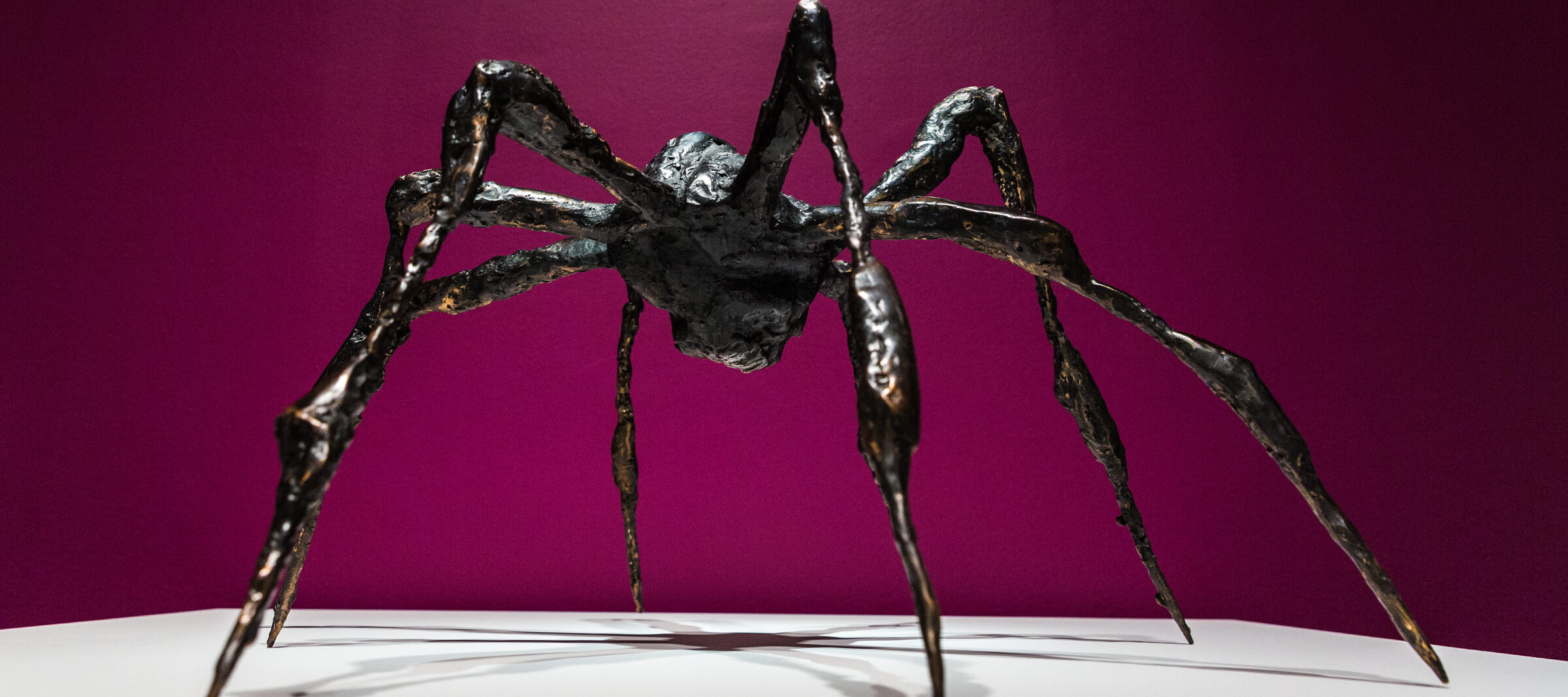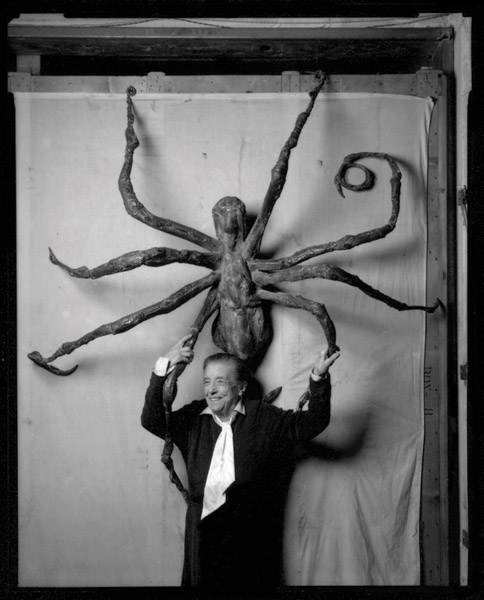Louise Bourgeois’ life spanned nearly the entire twentieth century. A legend in her own time, she became part of the canon of art history, which has not been kind to women. Bourgeois likely did not categorize herself as a “woman artist,” but as a woman with a particular perspective on a very rich and complex life, she pioneered areas of expression where others feared to tread. She explored the interstices of the mind and the sublime landscape of the human form. She influenced the work of many artists, including Eva Hesse and Bruce Naumann, in their use of untraditional materials and desire to express sensual, erotic, and sadistic fantasy. From her latex mantels of breast-like forms to her menacing cage sculptures, Bourgeois’ personal narrative came forth in a stream of consciousness that alluded, among other things, to her philandering father and beleaguered mother.
I challenge the reader to find a female visual artist before Bourgeois who expressed such blackness, cynicism, and bite in the tradition of Goya and akin to Picasso. On a handkerchief she stitched, “I have been to hell and back and let me tell you it was wonderful,” embracing the archetypal female pastime of embroidery to convey a message that challenges our expectations of the pithy sayings decorative pillows ordinarily display. Can hell be wonderful or is this the artist’s sarcastic wit? Do we imagine that this visit lie at the core of her artistic imagination? And is this a pillow on which you would want to lay your weary head? Like many women artists Bourgeois defied categorization and worked outside of prevailing trends.
Without a way to categorize Bourgeois, though, the art world struggled to define her. She did not secure fame until very late in life with major, serious retrospectives and scholarly catalogues. (In 1982, at age 70, she became the first woman to have a solo exhibition at the Museum of Modern Art in New York; in 1993 she represented the U.S. at the Venice Biennale; and in 2007 the Tate Modern in London and Centre Pompidou in Paris organized a major retrospective of her work.) An “artist’s artist” some say and true to that identity, she held salons where artists could visit and subject their work to her critique. Bourgeois was quirky and feisty. She wove feminist iconography to critique male dominance throughout her work and in the end, it was this repeated objective that conferred upon her iconic status. A non-conformist, creative dissenter, Louise was anything but bourgeois.

